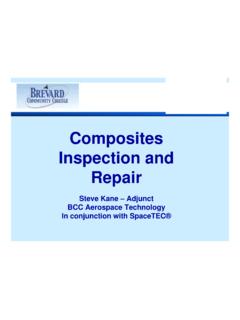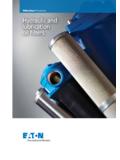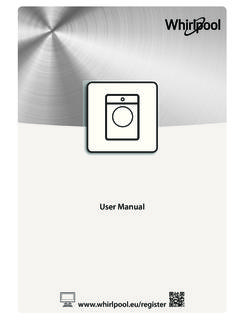Transcription of The Guide to Anchoring - Vryhof
1 Anchor Manual 2010 The Guide to Anchoringanchor manual 2010 Copyright Vryhof Anchors , Capelle a/d Yssel, The Netherlands part of this book may be reproduced in any form, by print, copy or in any other way withoutwritten permission of , Stevin, Stevpris, Stevshark, Stevtensioner and Stevmanta are registered trade reserves all intellectual and industrial property rights such as any and all of their patent,trademark, design, manufacturing, reproduction, use and sales rights thereto and to any article disclosed information in this manual is subject to change without prior notice. Vryhof Anchors is notliable and/or responsible in any way for the information provided in this edition published 1984. Print run 7,500 edition published 1990. Print run 7,500 second edition. Print run 5,000 edition published 2000. Print run 2,500 third edition print run 1,500 reprint third edition print run 1,000 print fourth edition published 2006 print run 1,000 print fourth edition print run 1,000 print fourth edition print run 1,000 print fourth edition print run 1,000 of Anchors Box 109, 2900 AC Capelle a/d Yssel, The Neth er the beginning of exploration of oil & gas offshore the art of anchoringhas taken a dramatic turn.
2 Vryhof Anchors was one of the pioneers andachieved holding powers up to 25 times an anchor's own the company soon emerged as market leader in anchordesign and manufacturing and with over 7500 units sold, its anchors arethe most applied understood that clients needs cannot be satisfied by supply of standard hardware alone. With best-in-class sales services it shared technologyto create fit-for-purpose mooring systems; it initiated lease/purchase concepts and introduced an alliance of leading mooring component manu-facturers in order to more efficiently serve a changing offshore industry inthe 1990s. Exploration in ever deeper waters and more remote locations has encour-aged the development of more advanced mooring solutions. ConsequentlyVryhof anchor holding powers now reach beyond 75x their weight. Onceagain, the industry welcomes new ways of cooperation to include supply ofcomplete mooring systems and lease concepts. This sets the stage for Vryhof , who under new private ownership and witha presence in major offshore arena s will continue to responsibly introduce quality designs in pace with industry's requirements; to explore opportunitiesto approach clients in an open, sincere, professional manner and take itsworld class services well into a new era for the benefit and satisfaction of profileIntroductionA stone and something that looked like a rope.
3 For millennia this was thetypical anchor. Over the last 25 years of more recent history, Vryhof hasbrought the art to a more mature status. They have grown into a worldleader in engineering and manufacturing of mooring systems for all kindsof floating structures. In doing so the company has secured numerousanchor and ancillary equipment patents, and shared its experience with others. The company understands that the needs of the industry can not be satisfiedby the supply of standard hard-ware only. Universal and tailored solutions rooted in proven engineering should be based on long practical has been and will be introducing new and original anchor designswell into the 21st century. With their products, advice and this manual, itshares this knowledge with those who are daily faced with complex manual is intended as a means of reference for all who purchase, use,maintain, repair or are in any way involved with anchors. Though writtenfrom one anchor manufacturer s standpoint, the information containedherein is applicable to many types of anchors.
4 Total objectivity is, of course, is hoped this manual will contribute to the work and success of all whowork with anchors. They are the only fixed reference point for many of the floating structures on the world s often turbulent systemsMooring systems have been around just as long as man has felt the need foranchoring a vessel at sea. These systems were used, and are still used, onships and consisted of one or more lines connected to the bow or stern ofthe ship. Generally the ships stayed moored for a short duration of time(days).When the exploration and production of oil and gas started offshore, aneed for more permanent mooring systems became apparent. Numerousdifferent mooring systems have been developed over the years, of which ashort selection is presented drilling rig- generally the semi-submersibles aremoored using an eight point mooring. Two mooring lines come together ateach of the columns of the buoy- generally the buoy will be moored using four or more moor-ing lines at equally spaced angles.
5 The mooring lines generally have a cate-nary shape. The vessel connects to the buoy with a single line and is free toweathervane around the buoy- these types of buoys have a mooring that consists of a singlemooring line attached to an anchor point on the seabed, underneath thebuoy. The anchor point may be gravity based or mooring - this type of mooring is generally used on FPSOs and FSOsin more harsh environments. Multiple mooring lines are used, which cometogether at the turntable built into the FPSO or FSO. The FPSO or FSO is ableto rotate around the turret to obtain an optimal orientation relative to theprevailing weather conditions. semi-sub mooring typical turret mooring 6fig. 1-01catenary systemfig. 1-02taut leg systemSpread mooring- generally used on FPSOs and FSOs in milder environ-ments. The mooring lines are directly connected to the FPSO or FSO at boththe stern and bow of the oil and gas exploration and production was conducted in shallow todeep water, the most common mooring line configuration was the catenarymooring line consisting of chain or wire rope.
6 For exploration and produc-tion in deep to ultra-deep water, the weight of the mooring line starts tobecome a limiting factor in the design of the floater. To over-come this problem new solutions were developed consisting of syntheticropes in the mooring line (less weight) and/or a taut leg mooring system (fig. 1-01 and fig. 1-02).The major difference between a catenary mooring and a taut leg mooringis that where the catenary mooring arrives at the seabed horizontally, thetaut leg mooring arrives at the seabed at an angle. This means that in a tautleg mooring the anchor point has to be capable of resisting both horizontaland vertical forces, while in a catenary mooring the anchor point is only sub-jected to horizontal forces. In a catenary mooring, most of the restoringforces are generated by the weight of the mooring line. In a taut leg mooring, the restoring forces are generated by the elasticity of the advantage of a taut leg mooring over the catenary mooring is that thefootprint of the taut leg mooring is smaller than the footprint of the cate-nary mooring, the mooring radius of the taut leg mooring will be small-er than the mooring radius of a catenary mooring for a similar systems7fig.
7 1-03fig. 1-04 Mooring componentsA typical mooring system can be divided in three different components, themooring line, the connectors and the anchor lineChainThe most common product used for mooring lines is chain which is availablein different diameters and grades. Two different designs of chain are usedfrequently, studlink and studless chain. The studlink chain is most common-ly used for moorings that have to be reset numerous times during their life-time, for instance semi-submersibles, while studless link chain is often usedfor permanent moorings (FPSOs, buoys, FSOs). A chain mooring line can beterminated in either a common link or an end link (fig. 1-03).Wire ropeWhen compared to chain, wire rope has a lower weight than chain, for thesame breaking load and a higher elasticity. Common wire ropes used in off-shore mooring lines are six strand and spiral strand. The wire rope is termi-nated with a socket (for instance open spelter, closed spelter, CR) for con-nection to the other components in the mooring system.
8 Generally wirerope is more prone to damage and corrosion than chain (fig. 1-04).Synthetic fibre ropeA recent development is the use of synthetic fibre ropes as mooring materials that can be used are polyester and high modulus polyeth-ylene (Dyneema). The major advantage of synthetic fibre ropes is the lightweight of the material and the high elasticity. The synthetic fibre rope isgenerally terminated with a special spool and shackle for connection to theother components in the mooring componentsfig. 1-05fig. 1-06fig. 1-07fig. 1-08 ConnectorsShacklesThe shackle is a connector that is very common in the offshore industry. Itconsists of a bow, which is closed by a pin. Many different types of shacklesare available, depending on the application. The shackle can be used inboth temporary and permanent moorings (fig. 1-05).Connecting link kenter typeThe connecting link kenter type is most commonly used for the connectionof two pieces of chain mooring line, where the terminations of the two pieces have the same dimensions.
9 The connecting link kenter type has thesame outside length as a chain link of the same diameter. Generally connecting links kenter type are not used in permanent mooring systems, as they have a shorter fatigue life than the chain (fig. 1-06).Connecting link pear shapedThe pear shaped connecting link is similar to the connecting link kentertype, except that it is used for the connection of two pieces of mooring linewith terminations that have different dimensions. Like the connecting linkkenter type, the pear shaped connecting links are not used in permanentmooring systems (fig. 1-07).Connecting link c typeLike the connecting link kenter type, the connecting link c type is used forthe connection of two pieces of mooring line with terminations that havethe same dimensions. The major difference between the kenter type andthe c type is the way that the connector is opened and closed. This connec-tor is generally not used in permanent moorings (fig. 1-08).9 Mooring componentsSwivelsA swivel is used in a mooring system, generally of a temporary type, torelieve the twist and torque that builds up in the mooring line.
10 The swivel isoften placed a few links from the anchor point, although it can also beplaced between a section of chain and a section of wire rope. There aremany different types of swivels available, although a disadvantage of mostcommon swivels is that they may not function while under load, which iscaused by high friction inside the turning mechanism. A new development isswivels that are capable of swivelling under load, due to special bearing sur-faces inside the mechanism (fig. 1-09). Anchoring pointDead weightThe dead weight is probably the oldest anchor in existence. The holdingcapacity is generated by the weight of the material used and partly by thefriction between the dead weight and the seabed. Common materials in usetoday for dead weights are steel and concrete (fig. 1-10).fig. 1-10 fig. 1-09 10 Mooring componentsfig. 1-12 Drag embedment anchorThis is the most popular type of Anchoring point available today. The dragembedment anchor has been designed to penetrate into the seabed, eitherpartly of fully.










